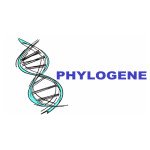Risk assessment of allergic sensitization and allergic reactions with new ingredients by Phylogene
10 September 2024
Ingredient industry is growing contineously for cosmetic products, natural food or new food, with ingredients such as plant extracts, probiotics, algae extracts or others. Proteins from foreign species have the potential to induce immune responses in exposed subjects. It is not uncommon that such foreign proteins are able to provoke an immune response that results in allergic sensitization.
Also, there is a need for methods able to determine in complex mixtures the risk to induce allergic sensitization and allergic reactions in exposed subjects. In parallel with methods able to determine the sensitization effects on cell lines or animals (1), new methods are now available to determine the allergenic potential of proteins by homology with known allergens or new neoallergen risk assessment.
Beyond the IgE affinity measurement by classic inhibition methods well known at Phylogene, mass spectrometry proteomics using the last generation instruments and dedicated bioinformatics allows to know which peptide may be close to allergens by database query and pathways analysis (2) (4) and even what haptenation on large proteins risk exists with chemicals which is a molecular initiating event and first in the sequence of events leading to skin sensitisation (3).
(1)Daniel AB and all. International Regulatory Requirements for Skin Sensitization Testing Regul Toxicol Pharmacol. 2018 June ; 95: 52–65.
(2)D’Auria G and all. Identification of allergen encoding sequences in a novel food ingredient from Moringa oleifera leaves. Food Chem. 2023 Feb 1:401:134185
(3)Parkinson E and all. Proteomic analysis of haptenation by skin sensitisers: Diphencyprone and ethyl acrylate. Toxicol In Vitro. 2020 Feb:62:104697
(4)Krutz NL and all. Proteomic and Bioinformatic Analyses for the Identification of Proteins With Low Allergenic Potential for Hazard Assessment. Toxicol Sci. 2019 Jul 1;170(1):210-222
With PHYLOGENE, you can characterize and understand the effects as well:
High-resolution nano LC-MS/MS quantitative proteomics and homology data processing for allergenicity safety assessment
High-resolution nano LC-MS/MS quantitative proteomics and CORAVALID™ data processing for sensitization by ingredient determined on cell lines such as dendritic cells or keratinocytes.
Quantitative inhibition of allergen‐specific IgE antibody ELISA.
CONTACT
Gilbert Skorski
PHYLOGENE
62, Route Nationale 113
30620 BERNIS
Tel : +33 4 66 04 77 99
Fax : +33 4 66 04 77 97
e-mail : gskorski@phylogene.com
web : www.phylogene.com
LinkedIn : https://www.linkedin.com/company/phylogene
Twitter : https://twitter.com/Phylogene_One








 Follow us on Linkedin!
Follow us on Linkedin!
You must be logged in to post a comment.